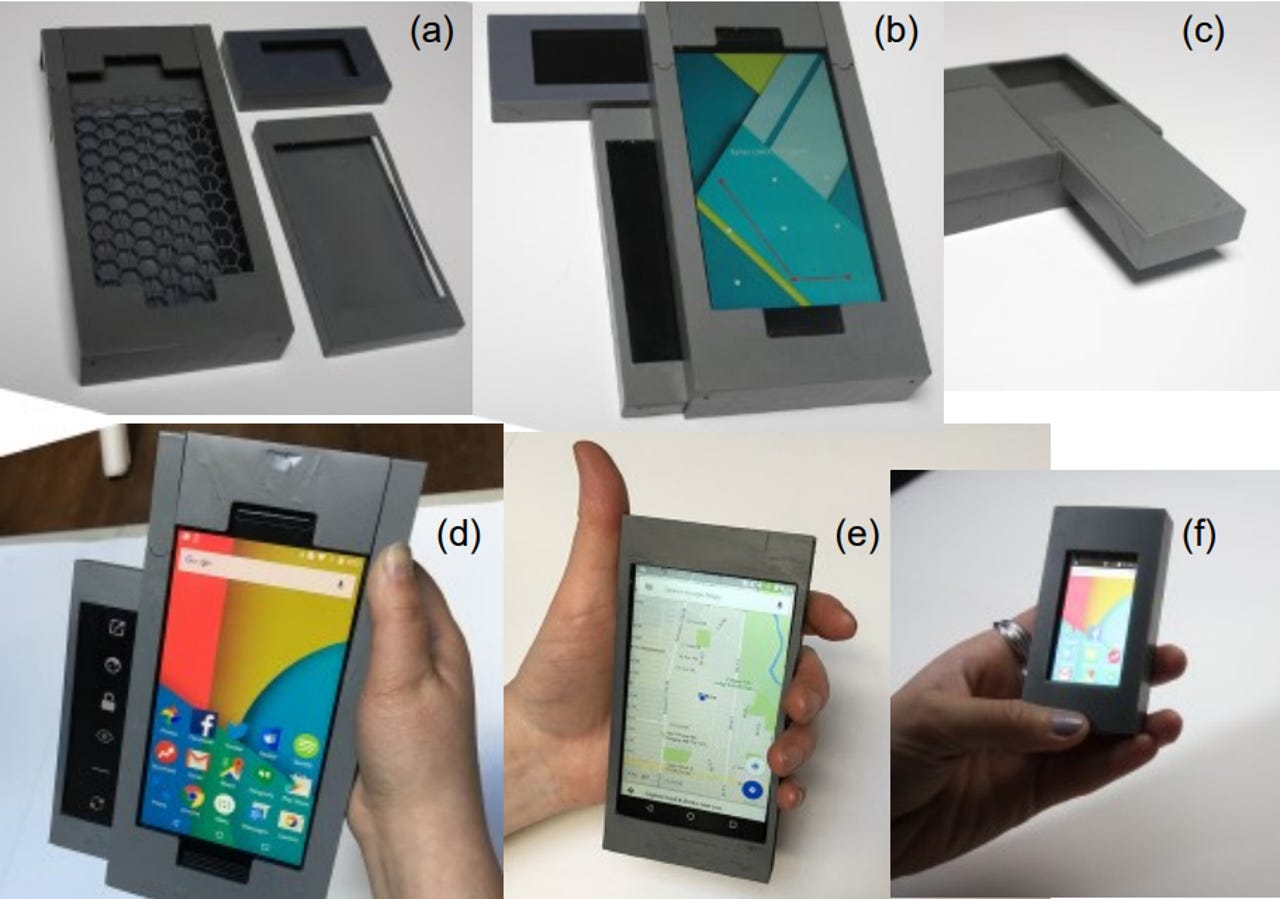Here's the 3-in-1 modular lending phone: Could it really be the way ahead?


The "modular smartphone for lending" has a larger-screen master phone and two smaller phones that slide into its back.
Google and Motorola have had a crack at modular phones with swappable components, but have never attempted to pack two extra phones into a modular design.
However, researchers from Canada have done just that, with a new three-in-one modular phone that aims to make it easier and safer to lend a phone to family, friends, and even strangers.
Instead of lending a primary phone, the owner would slide out a secondary access-controlled device.
The "modular smartphone for lending" has a larger-screen master phone and two smaller phones that slide into the back, including a medium-sized, fully-functional phone, and a restricted 2.4-inch small piece for sharing with strangers, say, to help them make a call.
The phones have a custom version of Android that supports several lending modes, so an owner can share a secondary device and limit access to a single app or multiple apps, or share a screen on a second device.
The lending phone concept and prototype is being developed by researchers from the University of Calgary, Dartmouth College, and the University of Waterloo. They explain the motivation for the concept in a paper that explores lending habits and details a usability study.
The concept is grounded in findings that people lend their phones, despite the risk of exposing personal information. Research has also found that lending is also more common in poorer countries.
The prototype consists of a 3D-printed housing with a slot for the main device, and slide-in rails on the back for the two smaller devices.
It uses a Nexus 6P as the main phone, a Nexus 4 as the medium phone, and custom hardware for the small device. The smaller devices have NFC tags in the case that are used by the Nexus 6P's NFC chip to detect when a secondary device is attached or detached.
The prototype is too unwieldy to be used as a daily device, but does demonstrate how the lending mechanisms can work.
As shown in a video, when the medium device is slid out, it displays a menu of icons for different lending modes, including a single-app mode, guest mode, full access, and screen sharing.
If none of the options is pressed, the secondary device displays a list of default apps and ones that are locked. The person loaning the device can hit a padlocked app to request access, which triggers a notification on the main device for approving or denying access.
They've also enabled a monitoring view that provides the main device a full view of the smaller device's screen and a breakdown of app usage.
The researchers have entertained the idea of optional modularity, or a phone without any modules that can be enabled with modular pieces when needed, such as on a road trip with the kids.
And they reckon it would be possible to create a lendable, modular smartphone about as thick as Google's Project Ara device, which was 9.7mm thick.
Teddy Seyed, lead author of the paper, told MIT Technology Review that parents often quickly realize the feature could be useful for sharing the phone with their kids.
Previous and related coverage
The next must-have smartphone upgrades: Components you can swap yourself, and a conscience
Fairphone has launched its first camera upgrade module as well as announcing a €6.5m funding injection.
Android creator Andy Rubin launches his modular Essential phone
A new take on the modular phone with clip-on components, starting at $699.